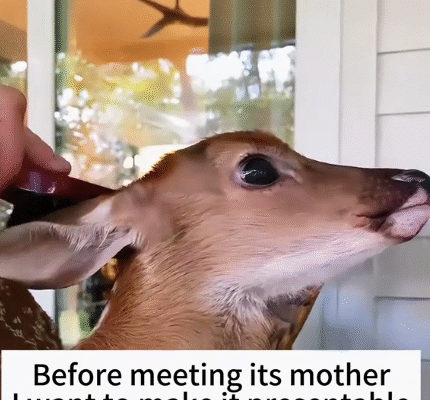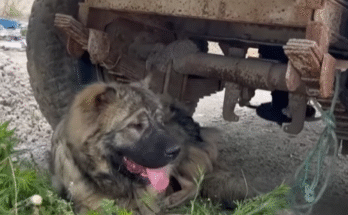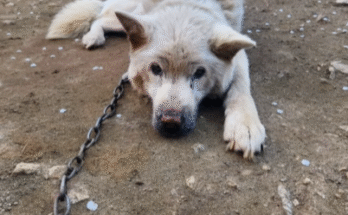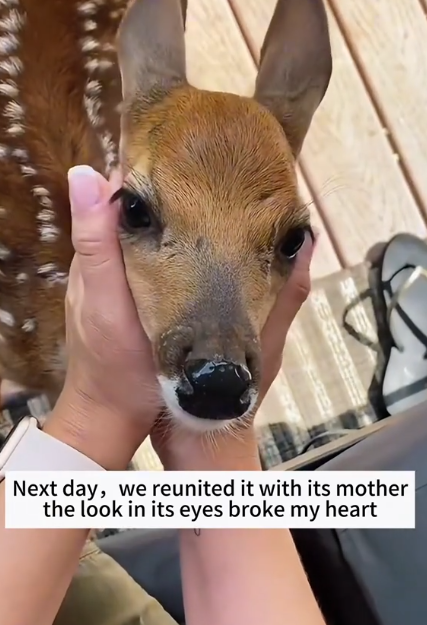
In a quiet countryside nestled near the edge of a forest, an ordinary day turned into an unforgettable moment of compassion. Thomas and Elena, a married couple in their late thirties, lived in a small cottage surrounded by tall trees, chirping birds, and the peaceful hum of nature. Their lives revolved around caring for their garden, taking long walks in the woods, and enjoying the simplicity that country life offered. But one afternoon, as they were returning from their routine walk, something unusual caught their attention.
Just off the trail, hidden behind a patch of wildflowers, lay a tiny fawn — curled up, trembling, and alone. Its big brown eyes looked up at them, filled with confusion and fear. The couple stopped in their tracks. The young deer appeared no more than a few days old, its legs thin and wobbly, its spotted fur still bearing the softness of a newborn.
Elena slowly knelt down, keeping her movements gentle and non-threatening. “It’s okay, baby,” she whispered. “We’re not going to hurt you.”
Thomas scanned the area for any signs of the mother deer. They waited quietly for several minutes, listening for rustling or a distant call, but the forest remained silent. It was likely that the fawn had become separated while its mother was foraging or fleeing from a potential threat. The risk of predators loomed large, and the baby deer was vulnerable.
They decided to leave the fawn undisturbed for a little while, hoping the mother would return. But as the sun dipped lower, and evening crept in, the temperature began to drop. When they came back after an hour with binoculars and no sign of the mother, they knew the fawn wouldn’t survive the night alone.
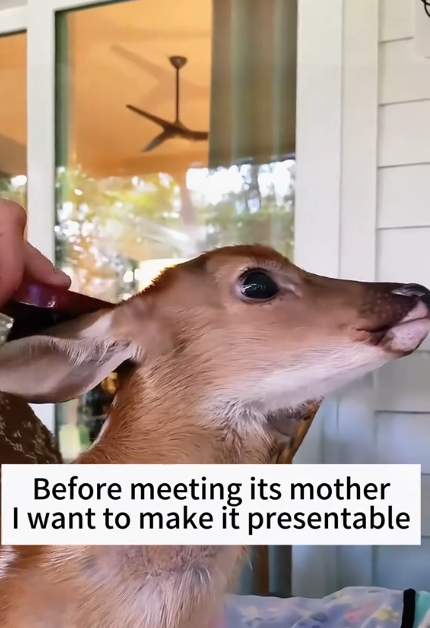
“We can’t leave her out here,” Elena said firmly.
Thomas agreed. Though they both understood that wild animals are best left in nature, this situation called for intervention. With the utmost care, they wrapped the little deer in a soft blanket and carried her back to their home.
Inside the cottage, they created a quiet space in a spare room, filled with straw, warmth, and soft lighting. They didn’t name her, as they didn’t want to treat her like a pet. Their goal was to help her recover and return her to the wild as soon as it was safe. Elena, who had volunteered at an animal rescue center years ago, remembered some of the basics of wildlife care.
Over the next few days, the couple fed the fawn with goat milk using a bottle designed for orphaned animals. The deer was weak at first, but she began to gain strength quickly under their gentle care. She started to trust them, following Elena around the house on unsteady legs and nuzzling Thomas’s hand whenever he approached.
The couple contacted a local wildlife rehabilitation expert to confirm they were doing everything correctly. With guidance, they learned how to stimulate the deer’s instincts rather than tame her. That meant limited cuddling, encouraging natural movement, and slowly preparing her for reintegration into her forest habitat.
As the weeks went on, the fawn’s energy blossomed. She began running small laps in their backyard, leaping awkwardly but joyfully. Her fur became sleeker, and her legs grew stronger. Every morning, Elena would sit by the garden and watch the deer explore the bushes, nibble on leaves, and react to the sounds of birds and squirrels.
But with every day of progress came the bittersweet realization: they would have to let her go.
Elena and Thomas both felt a growing attachment to the young deer. She had become a part of their lives, a silent presence that brought warmth to their home. But they knew that the forest was her true home, and keeping her longer than necessary could risk her safety in the long run. Deer raised too closely with humans often lose their fear of people, which can put them in danger later.
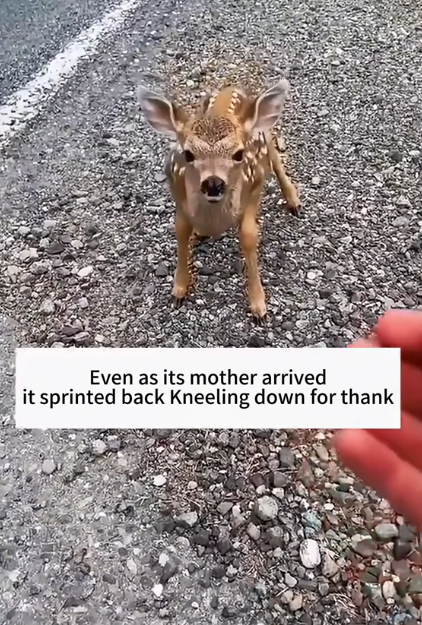
After two months of rehabilitation, the fawn was ready.
The couple picked a clear, sunny morning for her release. With the help of the wildlife expert, they chose a spot deep in the forest, far from roads or houses but rich in food and safe from predators. They brought her to the site in a transport crate, lined with straw and comfort.
When they opened the gate, the deer hesitated for a moment. She looked back at them, her eyes full of trust and a hint of uncertainty. Then, in a flash of grace and courage, she leapt into the forest, her legs strong, her spirit free.
Elena wiped a tear from her cheek as she watched the deer disappear between the trees. “She’s going to be okay,” she said, her voice shaking slightly.
Thomas nodded. “We did the right thing.”
Over the following weeks, they returned to the area often, quietly hoping for a glimpse. Sometimes they thought they saw her — a flicker of white spots, a graceful figure in the distance. But they didn’t try to get too close. They knew that true love for a wild creature meant letting it go.
News of their rescue spread through the local community. Friends and neighbors praised their act of kindness, and a small article in the town newspaper even featured their story, titled “A Second Chance in the Forest.” People brought over gifts, cards, and even donations to a local wildlife rehabilitation fund set up in their honor.
But Thomas and Elena didn’t do it for the attention. For them, it was about empathy — a simple decision in the moment that grew into a life-changing experience. They had saved a life, and in doing so, they had deepened their connection to the land they called home.
Months passed, and the forest changed with the seasons. One autumn evening, as the leaves painted the woods in gold and red, Elena spotted a deer standing at the edge of their garden. It was taller now, stronger, and bore a confident presence. She couldn’t be completely sure, but something about the eyes — calm and knowing — told her it was the same fawn they had saved.
The deer stood there for a few moments, watching, before vanishing into the trees once more.
Elena turned to Thomas and smiled. “She came back to say thank you.”
And in that quiet, magical moment, they knew that their act of compassion had truly made a difference.
